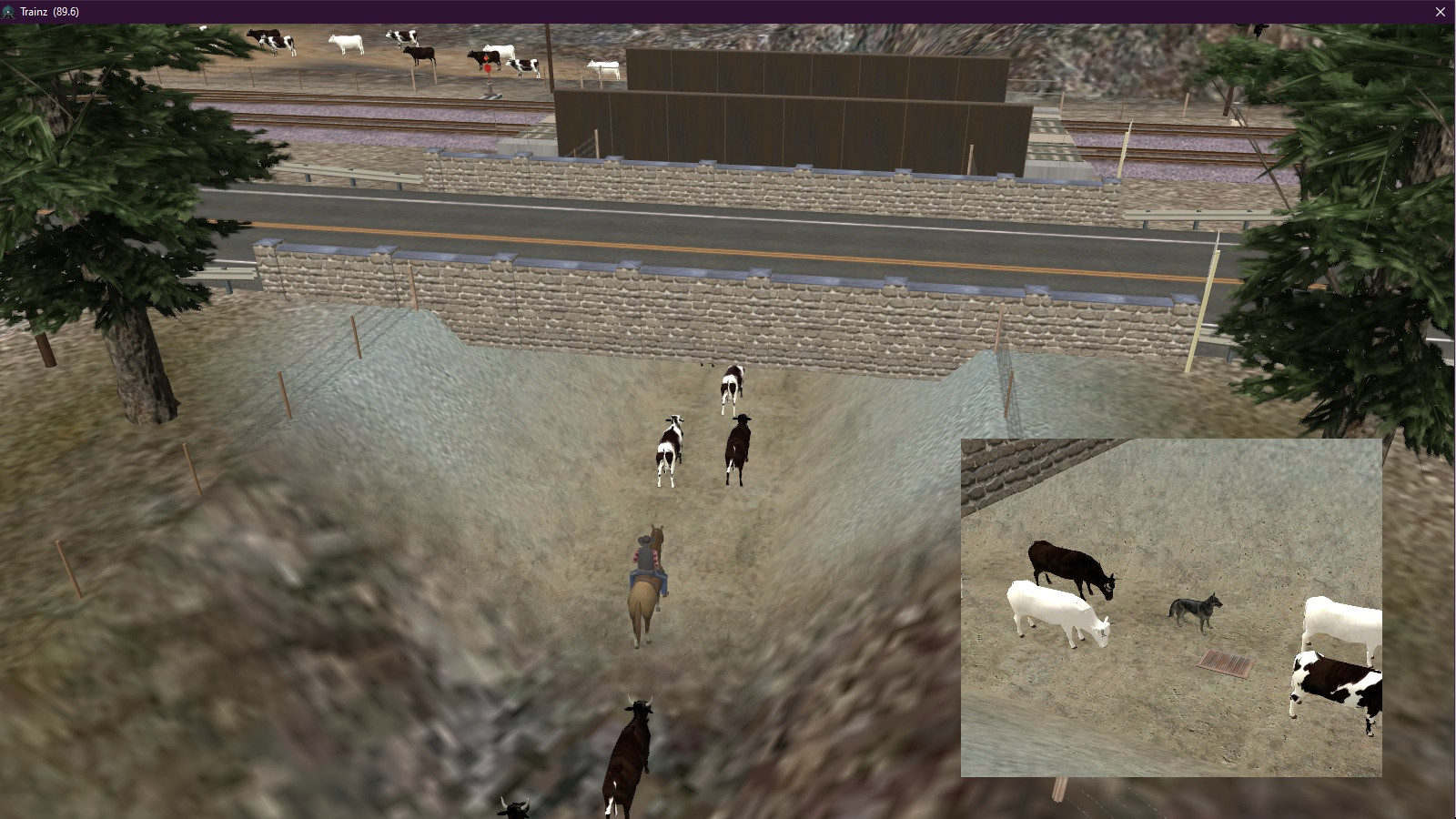JonMyrlennBailey
Active member
The underpass saves cattle and vehicles and trains and saves people in vehicles. Also a safe crossing for wild animals and human hikers and their dogs. You can probably guess what the pump house nearby is for. I wonder who pays for the construction and maintenance of such underpasses.
Here is a real-world underpass for cows:
https://www.youtube.com/watch?v=K0KJjf4bVL8
In some places, cattle must cross a highway or a railroad line directly. What is done to prevent vehicles or trains from hitting cows at these crossings? The railroad line could be fast: maybe something like 50 to 70 MPH, with heavy freights barreling through. Let's say one is driving cows from an open range back to the ranch and must cross directly at a railroad level or grade crossing. Does the cattle driver on horseback know the railroad's schedule for trains crossing there? Does the cattle driver call the railroad up on the telephone, the sat phone, the CB walkie-talkie or the Motorola radio to inform them of their plans to move a herd of cow across the tracks at a certain time on a certain day? Motor vehicles, even trailer trucks, can stop much quicker than trains unless it is a very low-speed railroad line. On my model railroad, I have a low speed line (15 MPH zone) with direct cow crossings across the train tracks at certain parts of the layout. These are short and light excursion passenger trains, not heavy freights, that run this line. The slow-moving train should be able to stop safely upon spotting a herd crossing the track ahead.
I have made improvements to my cattle underpass by reinforcing it with concrete under the road bridges to prevent erosion. I improved my road bridge with better-looking masonry wall. The road overpass is about 65 feet across. [FONT="]The clearance is enough for mounted horsemen and vehicles to pass under as ATV's and 4x4 trucks.[/FONT]

Here is a real-world underpass for cows:
https://www.youtube.com/watch?v=K0KJjf4bVL8
In some places, cattle must cross a highway or a railroad line directly. What is done to prevent vehicles or trains from hitting cows at these crossings? The railroad line could be fast: maybe something like 50 to 70 MPH, with heavy freights barreling through. Let's say one is driving cows from an open range back to the ranch and must cross directly at a railroad level or grade crossing. Does the cattle driver on horseback know the railroad's schedule for trains crossing there? Does the cattle driver call the railroad up on the telephone, the sat phone, the CB walkie-talkie or the Motorola radio to inform them of their plans to move a herd of cow across the tracks at a certain time on a certain day? Motor vehicles, even trailer trucks, can stop much quicker than trains unless it is a very low-speed railroad line. On my model railroad, I have a low speed line (15 MPH zone) with direct cow crossings across the train tracks at certain parts of the layout. These are short and light excursion passenger trains, not heavy freights, that run this line. The slow-moving train should be able to stop safely upon spotting a herd crossing the track ahead.
I have made improvements to my cattle underpass by reinforcing it with concrete under the road bridges to prevent erosion. I improved my road bridge with better-looking masonry wall. The road overpass is about 65 feet across. [FONT="]The clearance is enough for mounted horsemen and vehicles to pass under as ATV's and 4x4 trucks.[/FONT]

Last edited:

